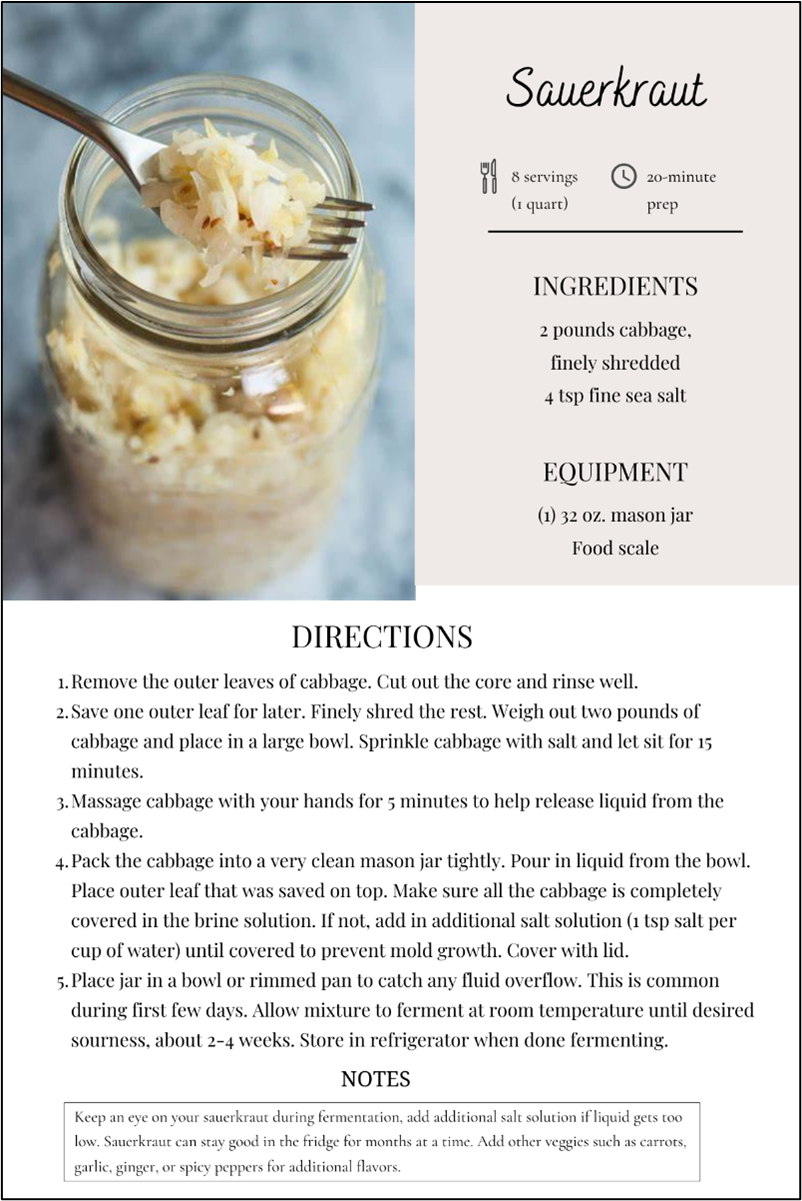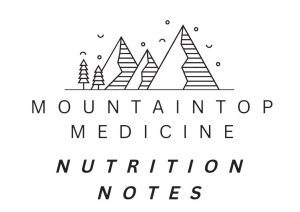Mountaintop Medicine: Nutrition Notes — Fermented Foods for Gut Health

Fermented foods have been a staple in many cuisines around the world for thousands of years. Their popularity continues to grow as we learn more about their health benefits. Fermented foods support normal gut function, are easier to digest, and help increase the absorption of many nutrients.
These foods are unique because they contain probiotic microbes (live bacteria and yeasts) that are beneficial for us. As humans we already have them living within us naturally. Probiotic foods just boost our supply and support our health.
When it comes to gut health the goal is to have more good microbes than bad. When the bad microbes take over, we can start to see problems arise. This includes issues with digestion (diarrhea, constipation, bloating), decreased immunity, and mental health (depression/anxiety). Other symptoms may include skin problems, headaches, and allergies.

Registered Dietitian Amanda Ericson joined the Estes Park Health team in August of 2024. (Photo by Wendy Rigby/Estes Park Health)
Examples of fermented foods include sauerkraut, kimchi, kefir, kombucha, soy products (tempeh, natto, miso) and my favorite sourdough bread!
Foods that are fermented have gone through what is known as the fermentation process. Microbes feed on sugars in food and produce organic acids, alcohol, and carbon dioxide gas. This increases the acidity of food, prevents further microbial growth, reduces food spoilage, and extends the shelf-life of food.
For sourdough bread, this process is what naturally leavens the bread causing the dough to expand and rise. The acids are what give sourdough its signature tangy flavor. An additional benefit of sourdough bread is that as much as 96% of gluten is broken down during fermentation. This can be helpful for improving gluten tolerance for those that may have a sensitivity to other breads. The nutritional profile of sourdough bread is often much better compared to more processed breads with higher levels of vitamins and minerals.
Kefir is a fermented milk product that can be found in the dairy section at the grocery store. Just like yogurt in many ways, it has a tangy taste and comes in plain and fruity flavors. Kefir can be consumed on its own or be added to smoothies. Although the origin of kefir is murky, the modern food we enjoy today can be traced to the North Caucasus Mountains situated between Russia and Georgia.
Kimchi is a staple food in Korean cuisine and can be made from fermenting cabbage, radish, or cucumber. The flavors are complex, not every kimchi has the same taste. This dish can be described as slightly salty, slightly spicy, and has an umami or savory taste depending on the seasonings used. Kimchi can be a side dish or be added to soups and stews.
Kombucha is a fermented tea beverage that originated in Northeast China. It is traditionally made from black tea (or green) and white sugar which produces a subtle vinegar taste. Kombucha is now available in many assorted flavors and can be a fun project to make at home.
Miso, Natto, and Tempeh are all made from fermented soybeans although each food is unique.
 Miso and Natto are traditional in Japanese cuisine. Miso is a thick paste that is used as the base in miso soup. Natto is a dish made from soybeans that have been fermented with a special type of bacteria that produces a stringy yet sticky texture and is often paired with white rice.
Miso and Natto are traditional in Japanese cuisine. Miso is a thick paste that is used as the base in miso soup. Natto is a dish made from soybeans that have been fermented with a special type of bacteria that produces a stringy yet sticky texture and is often paired with white rice.
Tempeh is traditional in Indonesian cuisine. It is made with cooked soybeans that are fermented with a special fungus. The fungus grows and binds the soybeans together to form a firm white cake. Tempeh is often described as having an earthy flavor, like mushrooms, and is often used as a meat substitute in many vegetarian dishes.
Sauerkraut is one of the most common and well-known ways of preserving cabbage. This food is enjoyed worldwide throughout many European and Asian countries, along with the United States. All you need is cabbage and a little salt to get started on making your own sauerkraut at home. It can be added to soups, stews, casseroles, salads, and sandwiches.
You can find the fermented foods listed here in the refrigerated section of the grocery store or you can make your own at home.
Enjoy this recipe to make your own sauerkraut.


